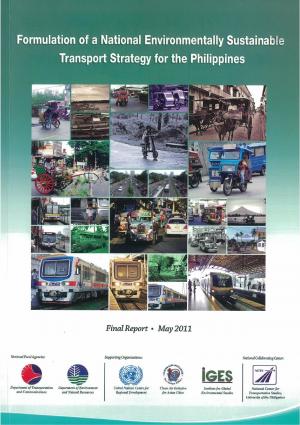Top Advantages of Transit Advertising Philippines for Services
Top Advantages of Transit Advertising Philippines for Services
Blog Article
How Transportation Marketing Can Change Public Transport Spaces Into Dynamic Advertising Platforms
Transportation marketing holds considerable potential to redefine mass transit spaces into vivid marketing platforms that educate and involve. By utilizing innovative formats such as electronic display screens and interactive booths, brands can not just get to a diverse target market yet also boost the overall traveler experience. This approach produces an one-of-a-kind opportunity for brands to get in touch with customers in a setting that is typically overlooked. As we check out the complex advantages and developing approaches of transit advertising, it increases the inquiry of how this improvement could redefine our interactions with both brand names and the city atmosphere.
Benefits of Transportation Advertising And Marketing

Furthermore, transit advertising and marketing is extremely cost-effective contrasted to conventional media. It allows marketers to achieve high impacts at lower costs, maximizing return on financial investment. The captive audience of commuters gives a chance for brands to share their messages to individuals who are usually responsive during their traveling times.
Moreover, the dynamic nature of transportation marketing permits projects to be updated regularly, ensuring that messaging continues to be appropriate and prompt. This flexibility can be critical in reacting to market fads or marketing occasions, keeping the brand name top-of-mind for customers. Lastly, the pervasive visibility of transportation marketing adds to brand name recall; repeated exposure within acquainted traveling contexts reinforces brand understanding and promotes customer loyalty, ultimately boosting and driving sales brand credibility.
Sorts Of Transportation Advertising
Public transportation systems supply numerous formats for marketing, each accommodating various advertising and marketing strategies and audience interaction techniques. One prominent type is exterior bus and train wraps, which cover the entire automobile and produce a mobile signboard impact, enabling high presence in city settings. These covers can record focus as they go across hectic roads, getting to a diverse audience.
One more popular format is indoor advertising and marketing, that includes posters, electronic displays, and ads on transit seats. These placements involve travelers during their journey, reinforcing brand name messaging in a restricted area. Digital shows, specifically, provide the advantage of dynamic material, enabling advertisers to upgrade messages in real-time.
Terminal advertising and marketing is likewise significant, featuring posters, banners, and interactive booths within transit stations. These ads take advantage of foot web traffic and can target particular demographics based on location.
Last but not least, marketing partnerships with transportation authorities can lead to special campaigns, such as themed transportation experiences or occasions, enhancing the general engagement with travelers. Each sort of transportation advertising and marketing provides distinctive benefits, permitting brands to customize their approach to successfully reach their target audience within the general public transport environment.
Engaging Commuters Properly
Commuters are significantly inundated with marketing messages throughout their everyday trips, making it important for brand names to involve them in innovative methods. To record attention in this congested room, advertisers need to focus on creativity and significance. Utilizing distinctive visuals and concise messaging can substantially boost the likelihood of interaction.
Interactive components, such as QR codes or augmented truth attributes, can also change static ads into immersive experiences, cultivating a deeper connection with the target market. Brands ought to concentrate on resolving commuters' passions and demands, customizing messages to reverberate with their way of living, whether through promotions for regional businesses or services created to boost their travelling experience.
Moreover, timing plays an important duty; purposefully positioning ads throughout peak commuting hours can take full advantage of presence and impact. Engaging commuters effectively also involves leveraging social networks combination, enabling travelers to share their promotions or experiences directly from transportation systems, therefore amplifying brand reach.
Basically, reliable involvement rests on recognizing check out this site the traveler journey and creating compelling, interactive, and pertinent advertising and marketing experiences that not only capture attention yet likewise drive action and commitment. By doing so, brands can transform mass transit right into a dynamic marketing system that resonates with its target market.

Measuring Advertising Impact
How can brands precisely analyze the effectiveness of their advertising campaigns en route environments? Measuring the influence of transit advertising calls for a diverse approach that incorporates quantitative and qualitative metrics. One common approach is tracking interaction via mobile analytics, where brands can analyze foot web traffic patterns and app communications before, throughout, and after campaigns.
Surveys can provide useful understandings into brand name recall and consumer belief, allowing brand names to gauge exactly how well their messages reverberate with commuters. In addition, keeping track of social media sites interaction pertaining to particular projects can reveal changes in public assumption and brand conversation.

Furthermore, collaborating with transit companies can boost dimension accuracy, as they frequently possess in-depth group information on ridership trends. By integrating these approaches, brands can establish a detailed understanding of their advertising and marketing performance, ensuring that their campaigns not only reach but also impact their target audiences efficiently.
Future Patterns en route Marketing
A substantial change is prepared for en route advertising and marketing as technical innovations and transforming customer habits reshape the landscape. Transit Advertising Philippines. The combination of digital displays and interactive media is anticipated to boost interaction, enabling brands to deliver vibrant web content that reverberates with diverse audiences. As mass transit systems welcome wise innovation, advertisers will certainly utilize real-time information analytics to tailor messages based on guest demographics and habits
Furthermore, boosted fact (AR) is poised to revolutionize the means commuters communicate with promotions. By supplying immersive experiences, AR can transform an ordinary trip into an interesting narrative that captures focus and promotes brand name loyalty. This innovation will likely urge Going Here advertisers to develop more experiential projects that drive consumer communication.
Sustainability is one more crucial fad affecting transit marketing. As environmental awareness grows, brand names will increasingly look for to line up with environment-friendly practices, making use of sustainable materials and promoting environment-friendly efforts within their projects.
Conclusion
Finally, transit advertising and marketing offers substantial benefits by improving brand name visibility and involving a restricted audience. With numerous styles, such as outside wraps and digital displays, it transforms mass transit right into a lively advertising and marketing platform. Efficient involvement approaches and robust measurement techniques additionally intensify its impact. As trends evolve, the possibility for innovative interactions between brand names and travelers is poised to expand, making certain that transit advertising stays an essential part of modern marketing techniques.
Transit advertising holds significant potential to redefine public transport rooms right into lively marketing platforms that educate and involve. The prevalent existence of transit advertising and marketing adds to brand recall; repeated direct exposure within acquainted travel contexts strengthens brand awareness and cultivates customer loyalty, ultimately driving sales and enhancing brand name online reputation.
Just how can brands accurately assess the performance of their marketing projects in transit environments?In verdict, transportation marketing provides significant benefits by improving brand visibility and involving a captive audience. Transit Advertising Philippines. As trends advance, the capacity for innovative communications between travelers and brand names is poised to grow, making certain that transit advertising continues to be a crucial component of modern marketing approaches
Report this page